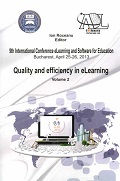TRAINING AND EVALUATIONOF OF THE SEAGOING PERSONNEL IN THE „MIRCEA CEL BATRAN” NAVAL ACADEMY
TRAINING AND EVALUATIONOF OF THE SEAGOING PERSONNEL IN THE „MIRCEA CEL BATRAN” NAVAL ACADEMY
Author(s): Alecu Toma, Andrei Pocora, Sergiu LupuSubject(s): Education
Published by: Carol I National Defence University Publishing House
Keywords: training; evaluation; maritime simulator
Summary/Abstract: Standard of Training Certification and Watchkeeping (STCW) Convention with Standard for Certification No. 2.14 for Maritime Simulator Systems, adopted in January 2011, impose the requirements for the performance of these systems that must include an appropriate level of physical and behavioural realism in accordance with recognized training and assessment objectives. "Mircea cel Batran" Naval Academy purchased in 2009 a complex of operational maritime simulators named "Integrated simulator for driving of watercraft" type Navi-Trainer Professional 5000 manufactured by TRANSAS Limited Co and certified by DetNorskeVeritas (DNV) as A class (full mission) for bridge and machinery. Through the simulator the following can be achieved: initial operational level for undergraduate students, managerial level for master students and professional improvement for seagoing personnel on the basis of agreements with crewing and shipping companies. NT PRO 5000 is also used in the tactical maneuver training and evaluation of Navy officers according to NATO interoperability standards. At the same time it can be used in scientific research being able to simulate real conditions of a shipwreck analysing the kinematic of ships involved (motion parameters), environmental (tide, current, wind, wave, swell, depth) and additional parameters (distance, bearing). The module "Transas Evaluation and Assessment System (TEAS)" of the simulator allows objective assesment of exercise fulfilment correctness. In the simulator the students have the possibility to realize Joint Exercises with both simulators (bridge and machinery) and in that way the exercises will achieve the highest level of complexity, by simulating an entire ship with all complex activities onboard. The combined training of bridge and engine watching team will ensure achieving the goal of improving interoperability between these two typesof specialists, realized in almost the same conditions. After completing simulated exercices, the students can replay the entire action and have the possibility to emphasis the mistakes or the actions that were well taken, so they will have a superior feedback action after completing the training.
Journal: Conference proceedings of »eLearning and Software for Education« (eLSE)
- Issue Year: 9/2013
- Issue No: 02
- Page Range: 633-638
- Page Count: 6
- Language: English

